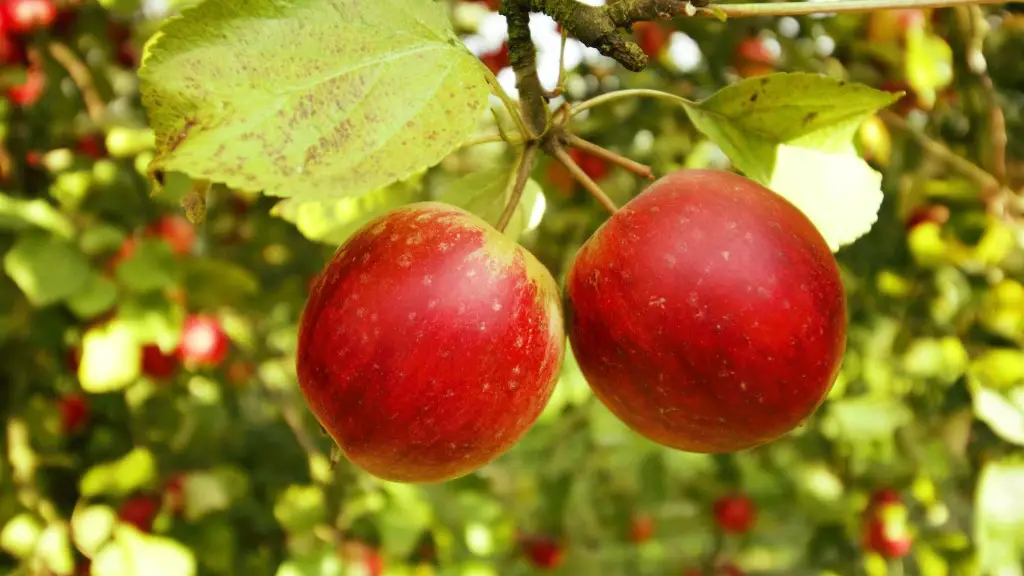When should you trim an apple tree? Pruning is an essential practice for encouraging healthy, consistent growth and a strong branch structure in an apple tree. To get the best results, pruning should be done at the right times of the year. Here’s an outline of when you should trim an apple tree.
During the planting process, it’s important to prune the apple tree’s larger branches to encourage a balance between root and shoot growth. Left unchecked, a newly planted apple tree can quickly become “top heavy” in terms of shoot growth over root growth, making the tree less stable in strong winds and susceptible to shallow rooting. Additionally, by pruning a new tree’s branches, you reduce the amount of sap that is lost through wilting and aim for a more attractive overall shape.
In late winter and early spring, you should look out for any dead, damaged or diseased branches, and prune them away. Cutting away such branches can help to reduce the risk of infection, especially in those vulnerable early months of development when a newly planted tree is more likely to suffer from frost damage.
During the later months of spring and early summer, it’s time to give your tree a significant prune. At this moment, you can catch any further dead wood and damaged branches that may have gone amiss in the winter months. You should then start to promote the growth of shorter side branches and to spread the tree out evenly in width. This can help to improve light exposure in the central parts of the tree, prevent too much growth in one direction and allow better light exposure for all the leaves.
Summer pruning should happen between late summer and mid-autumn. The objective here is to reduce the time of season-long internode growth and to prevent any further vertical growth in an apple tree that’s already established. This type of pruning can limit the tree’s size and encourage bushier growth for the following spring.
Pruning for Healthier Trees
Doing regular pruning on an apple tree helps to ensure a healthy crop and can extend a tree’s productive lifespan. Pruning can revitalize roots after a period of root disruption such as transplantation. Healthy, vigorous root growth ultimately helps to promote better branch and fruit formation, helping you to enjoy the fruits of your labor.
Pruning at the right times of year also helps to reduce the risk of disease. Weak branches tend to be more susceptible to disease and pest infestation, so reducing a tree’s overall stress levels through regular pruning can be an excellent way to stay one step ahead of any potential threats.
Improving the Structural Strength of a Tree
Pruning at the right times of year can help to strengthen a tree’s structural balance and encourage lower, stronger branches. This can be beneficial in the event of heavy wind, preventing tired or damaged branches from falling off and damaging the remaining parts of the tree. Such structural pruning is also key for boosting future fruit production, as it encourages better light exposure and air circulation in the tree.
Structural pruning also helps to maintain an attractive shape for the tree. By keeping the central leader clear, you can help to achieve a classic vase-like look, while simultaneously removing low-growing, vining branches that can cause the tree to become misshapen.
Preparing for Harvest Time
Trimming an apple tree is also important for improving fruit quality and yield. With the right cutting technique, you can direct the energy of the tree towards a smaller crop size, with each piece of fruit becoming larger. Thinning out any excessively dense clusters of fruit can also help fruit to ripen more evenly and quickly.
This technique, along with the deeper structural pruning referred to earlier, can also reduce the problem of fruit drop. Doing some pruning after harvesting has finished can help reduce the occurrence of fruit thins in the future.
Managing Fruit-Sucking Insects
Pruning an apple tree can also help to manage the occurrence of sap-sucking insects, such as aphids and spittlebugs. Pruning branches back by a third or so encourages better air flow in the tree, which can stop the build-up of moisture and warm air that acts as a breeding ground for such bugs.
Managing and removing branches also helps to reduce the mass of a tree, making it easier to reach certain parts of a tree, should regular monitoring be required. This can be necessary when trying to combat pest-based diseases like apple scab or cherry slugworm.
Establishing the Right Pruning Techniques
Overall, it’s important to take into consideration the growth and development cycle of a tree before deciding when to prune. By taking into account the age of an apple tree, its current stage of development, the purpose of pruning and the type of pruning required, you can ensure you’re making the right decisions at the right times of the year.
Trees that were planted within the last two to three years can generally benefit from more intense pruning, while established trees may need less attention than newly planted ones. In cases where pruning becomes necessary, it’s best to be aware of the type of pruning that’s needed, as this can determine when the most suitable time of year to prune a tree is.
How to Carry Out Pruning
Ultimately, when trimming an apple tree, it’s best to use a pruning tool like a pruning saw, loppers or pruning shears. Remember to sterilize your pruning tools before and after you use them as a preventative measure against disease. Prune as much of the branch as you can in one clean cut, and hold the branch firmly as you cut to avoid jagged edges that can damage the integrity of the branch’s structure.
Also bear in mind that cutting too much at any given time can put a great amount of stress on a tree and trigger a weakening of the branch structure. Incorrect pruning can also lead to poor nutrition, which makes a tree more vulnerable to infection.
What to Avoid When Pruning
Once you’ve determined when you’ll need to prune your apple tree, it’s essential to be aware of some of the common mistakes to avoid. Pruning a tree before its last frost, for example, can damage the vulnerable buds and shoots that form during the spring months.
It’s also important not to prune too heavily, as this can overload an apple tree and discourage the formation of new fruits. Heavy pruning can cause an imbalance between root and shoot growth and remove a vital part of a tree regardless of whether it’s newly planted or an established tree. Badly maintained pruning tools can corrode the wood of a tree and cause further damage to a tree’s structure.
What to Do After Pruning
Once pruning is complete, it’s important to be aware of the branch structure of a tree to ensure it remains stable and healthy. For example, removing cascading lower branches can reduce the risk of any falling branches caused by diseases that can weaken branch structure.
Mulching the ground at the base of a tree can help to reduce the amount of stress on a tree, as it helps to regulate soil temperature and moisture levels. A good mulching once a tree has been in the ground for two to three years can be beneficial in helping an apple tree to establish itself.
Lastly, it’s important to keep up with regular checks for signs of disease on a tree. If left unattended, diseases such as apple scab or scale insects can wreak havoc on a tree and make it vulnerable to further damage and infection. Regular checks help to allow you to catch any issues as soon as they arise and take action.




